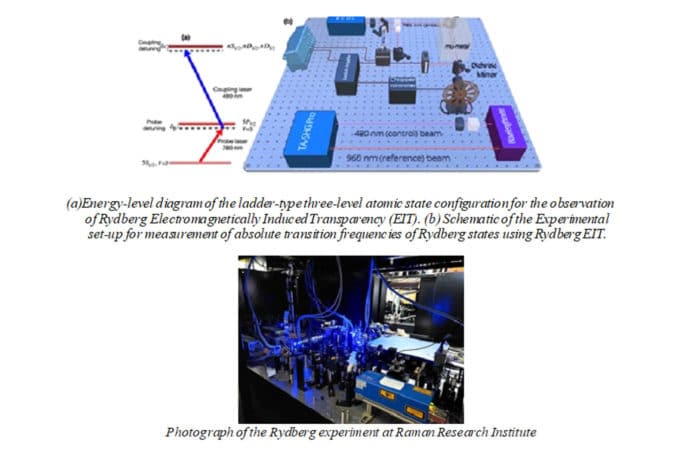A systematic and accurate measurement of the absolute transition frequencies was available only up to the principal quantum number n around 60. Beyond this, however, exact values of fundamental transition frequencies to the highly excited Rydberg states were required to access their exceptional properties for quantum technologies.
Scientists from Raman Research Institute (RRI), an autonomous Institute of the Department of Science and Technology (DST), have performed precision measurements of transition frequencies of highly excited Rydberg states. This work offers a framework for developing ideal candidates for quantum information processing and atomic sensor technologies.
Rydberg states are a common feature of atoms and molecules. These electronically excited states form series that converge to each quantum state of a cation. In simple words, Rydberg states are such states that converge on an ionic state with an ionization energy threshold associated with a particular ionic core configuration.
Due to their inter-atomic solid dipole-dipole interactions, Rydberg atoms offer a unique platform for the reliable implementation of scalable quantum information processing. Thanks to their high polarizability and longer lifetimes, highly excited Rydberg atoms are:
- Great candidates for precise electrometry and digital communication.
- Providing a diverse framework for novel atomic sensor technologies.
Scientists excited Rubidium atoms to the Rydberg states within their research program on ‘Quantum Technologies with Rydberg atoms. To do so, they used two-photon excitation in a ladder-type of a three-level atomic system.
Later, scientists measured the transition frequencies to Rydberg states using a specific technique called Rydberg Electromagnetically Induced Transparency (EIT) in a three-level ladder-type system of Rubidium.
The absolute transition frequencies of atoms to highly excited Rydberg states in Rubidium with high principal quantum numbers (up to n =124) were high precision. The measurements also yielded precise results for quantum defects in Rydberg states and ionization energy.
The results offer a framework for Rydberg excitation to highly excited Rydberg states in atomic clouds at very low temperatures and in arrays of individual Rydberg atoms trapped in optical tweezers. Such cold atom systems with long-lived coherence are an ideal toolbox for quantum information processing. This research would be useful for accurate identification.
Journal Reference:
- Silpa B. S., Shovan Kanti Barik, Saptarishi Chaudhuri, and Sanjukta Roy. Transition frequency measurement of highly excited Rydberg states of 87Rb for a wide range of principal quantum numbers. DOI: 10.1364/OPTCON.458153
